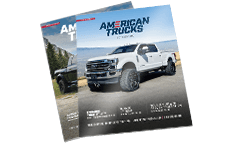
Floor Mats vs. Floor Liners: Which One is Best for Your Ride?

You’ll often hear the terms “floor mats” and “floor liners” used interchangeably, that’s because most people don’t even realize that there’s a notable difference between the two. While it may not seem so, the benefits offered by each can make one better suited for your particular vehicle and what you use it for. But, before you can choose the best protection for your carpets, it’s important to have all the facts. This article is meant to provide the scoop you’ve been looking for, and make sure you get what you need and make sure you’re not dropping your hard earned cash on the stuff you don’t.
Every new car these days will come with a set of floor mats in one form or another, but many can leave a lot to be desired for quality and protection. Maybe too thin, too small, or maybe even too nice and plush for grubby shoes. Or maybe worst case your mats are missing or damaged, at which point you owe it to yourself (and your resale value) to consider some replacement floor mats. The added comfort and/or protection of aftermarket floor mats is one of the easiest and cheapest investments you can make to keep your car fresh and clean for years.
So let’s get into the differences between floor mats and liners so you can choose the right level of comfort and performance for your budget.
Floor Mat Features & Benefits
Engineered to provide the ultimate flexibility and endurance in a wide range of situations, floor mats are generally made of high-quality composites that are soft to the touch. Designed with deep pockets, channels and ridges, car mats — like the all-weather model at the left from WeatherTech — lay flat along your floors. They can contain up to eight cups of liquid, so coffee spills on a hectic morning commute don’t seem all that bad. While most floor mats are made for a custom-fit, they do lack the precision of laser-measured floor liners.
If you are looking for floor mats you are probably in one of two camps; you need more protection or you need SOME protection for lost mats. Basic mats are for the second choice, though many offer added protection over or in lieu of factory mats as well. If you’ve got an old truck, or wheeling rig that you will get messy but don’t want to wear out the difficult to repair factory carpet, you won’t go wrong here.
Floor Liner Features & Benefits
Floor liners like Husky WeatherBeaters, as seen on the image on the left, feature tall outer edges that perfectly contour to the sides of your floorboards. Durably constructed from rigid materials that can withstand everything from snow and mud to motor oil, these all-weather liners provide maximum stopping power against any harmful mess. Another common feature of floor liners is their nibbed backing. This added benefit ensures that no matter how much your passengers or pets may move around, your liner stays right where it belongs.
There are several advantages here over floor mats, but that doesn’t mean that they’re the right choice for everyone. Consider your vehicle and what you’re using it for and think about which of these two would better suited for your needs.
Floor Liner Pros:
- Tend to last longer. They’re made from durable materials that have the ability to withstand whatever debris happens to be tracked onto them. If you’re in an area with harsh weather, and the soles of your shoes are often covered in much, floor liners are worth considering.
- Floor liners cover the entire footwell, including side lips that reach up to contain as much of a spill as possible.
Floor Liner Cons:
- Generally more expensive than mats. Because they take up a larger area, it takes more material to manufacture them and are designed with a more precise fit.
- More limited in available application.
This category ranges the spectrum from basic to premium. Liners like the WeatherTech Digitalfit and Husky Liners have been the gold standard for years, being perfectly contoured to your specific make and model (where available) but also class up the place a little in the process. There is an old saying that clean engine bays gets a little more of a white glove treatment in the mechanics bay. Similarly, having premium protection visible when you open the door and lets everyone know you care about your vehicle and are serious about keeping it nice.
While these liners are tough and durable, they don’t really provide the cozy look or feel of carpet. In the case you want both, look at something like the Aries StyleGuard XD or Lund Catch-it Carpet mats. These both provide excellent protection and spill containment, but with a slightly softer look and feel.
So, what interior protector should you choose?
Floor mats and floor liners have the same overall function — to protect your vehicle’s carpets against stains and spills. While the difference between the two is fairly minor, it’s worth noting those differences, as stated above. If you’re looking for hard-working defense against work-boots, look towards a rugged floor liner. Or, if you have the need for a lot of spill-catching channels, a rubber floor mat may be what’s best for you.

